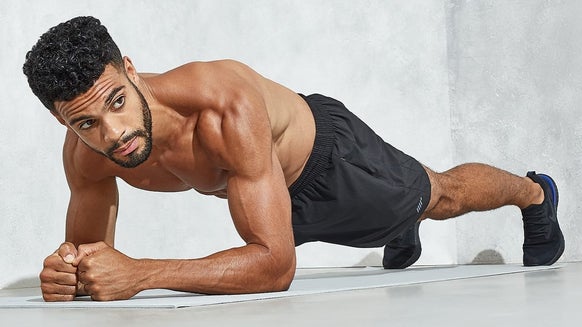
Cardiovascular health is not only an important component of fitness but maintaining your cardiovascular fitness also constitutes a major role in your overall health and longevity. As a basic rule, it’s reasonable to aim for a target of about 10,000 steps per day (which will equate to approximately 5-miles of walking, varying dependent on your stride length). Walking can provide an accessible, low-impact, and beginner-friendly method of increasing your caloric expenditure, which can help accelerate your journey to reaching any body composition goals.
On average, it takes 15 to 20 minutes to walk a mile - but read on for more detailed information and tips on walking to stay fit and healthy.
What are realistic times to walk a mile?
Adults typically walk at a speed of 3-4 miles per hour, so most can assume that it will take around 15-20 minutes to walk 1 mile. Of course, this is dependent on a few other factors, like intensity (are you walking faster or slower than usual?), limb length (longer legs = greater stride length, which is likely to slightly reduce the time required), age, and baseline fitness. There can also be some slight differences between genders, but overall, the typical time to walk one mile is more likely to be influenced by fitness, age, and limb length.
How long does it take to walk a mile (approximately)?
| Age | Fast (Minutes) | Average (Minutes) | Slow (Minutes) |
| 20 to 29 | 11 | 20 | 24 |
| 30 to 39 | 14 | 20 | 25 |
| 40 to 49 | 15 | 24 | 28 |
| > 50 | 20 | 28 | 35 |
Other walking distances and times
| Distance | Time (hours and minutes) |
| 1 kilometre | 10mins |
| 1 mile | 20mins |
| 3 kilometres | 30mins |
| 3 miles | 45mins |
| 5 kilometres | 45mins |
| 5 miles | 1hr 15mins |
| 10 kilometres | 1hr 30mins |
| half-marathon | 3hrs 15mins |
| marathon | 6hrs 30mins |
How to calculate your walking pace
There are a few different ways that can help you to track your walking pace. You can use a smartwatch and link it to your smartphone – this method will automatically record your pace along with other things like your heart rate and an approximation of calories burned. A GPS watch used for running can also help, without the need to pair it with a smartphone. This method involves the GPS watch tracking your location, so you will receive real-time information at your pace without having to bring your phone with you.
Alternatively, if you know the exact distance between two points (e.g. if you know your house is exactly 1-mile from the beach on a specific route), then you can calculate it yourself by calculating the distance travelled and divide it by the amount of time it took you to cover that distance. This will give you your pace.
What are the benefits of walking?
Cardiovascular Health:
When other methods, like running or cycling etc. are inaccessible (or maybe you just don’t enjoy them), then walking can offer a great alternative that allows you to get your heart rate elevated for sustained periods. This is key to developing your cardiovascular fitness, but also to maintain the health of your heart and vascular system – ultimately helping to prevent diseases related to obesity like atherosclerosis, heart attacks or strokes. While some exercise will always be better than none at all, it’s important to remember that you should aim to get your heart rate elevated for a sustained period of time (e.g. if your resting heart rate is around 70bpm, then getting it to around 120bpm for about 30+ minutes will have massive benefits for your health).
Recovery:
You may be into resistance training or other forms of cardiovascular training like triathlons or marathons. While it’s not absolutely essential to be active on rest days, getting the blood flowing a bit can help to increase the supply of nutrients to recovering muscles – maximising their ability to recover effectively. Getting your muscles warm can also provide a good opportunity to then perform some mobility exercises that are likely to support you when you return to your normal training.
Body Composition:
If you’re looking to lose a bit of weight, but you don’t enjoy running or don’t have access to other things for swimming or cycling etc., then walking offers an accessible method for you to increase you daily caloric expenditure. Ultimately, this will contribute to more rapid and sustainable weight loss, as you will not be confined to relying on reducing only your caloric intake to manage your weight. Alternatively, this allows you to eat slightly more than if you were to solely rely on a dietary caloric deficit.
Take Home Message
The time it takes to walk a mile is, as always, dependent on many other factors. It should be considered as an effective method of managing ones weight and improving or maintaining your fitness.







